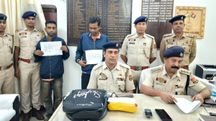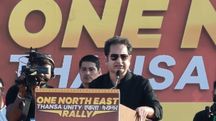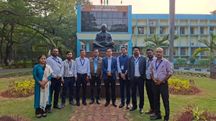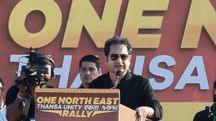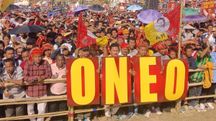May 20, 2000: The Night Tripura’s Bagber bled, a forgotten chapter of ethnic strife
The ethnic violence in Bagber, Tripura, in 2000 led to loss and displacement but remains largely forgotten. Highlighting this event is key to promoting harmony in the region
 May 20, 2000: The Night Tripura’s Bagber bled, a forgotten chapter of ethnic strife
May 20, 2000: The Night Tripura’s Bagber bled, a forgotten chapter of ethnic strifeThe Bagber Massacre remains one of the darkest, yet least remembered, episodes in the long and troubled history of ethnic conflict in Tripura.
On the night of May 20, 2000, insurgents from the outlawed All Tripura Tiger Force (ATTF) descended upon the Bagber relief camp, located near Kalyanpur—then in the West District, now part of Khowai district. The camp housed Bengali refugees displaced by previous waves of ethnic unrest.
Armed with automatic rifles and crude local weapons, the insurgents unleashed a brutal and indiscriminate attack on sleeping families. At least 25 people were killed on the spot, and many others were left grievously injured. The massacre unfolded under the cover of darkness and torrential rain, turning Bagber into a pool of blood and water, its soaked soil bearing silent testimony to the carnage.
The relief camp, meant to offer shelter and security to those already traumatised by ethnic violence, instead became a graveyard. The attack symbolised the chilling extent of the state's failure to protect its vulnerable citizens during one of the most volatile periods in Tripura’s history. The massacre reflected the bitter ethnic divide, rooted in decades of demographic transformation, land alienation, and political marginalisation, that gripped the state.
Renowned senior journalist Manas Pal, who has extensively chronicled Tripura's insurgency through books and firsthand reporting, recalled the Bagber Massacre as a turning point.
“It was the last large-scale massacre of its kind that Tripura witnessed,” he said. “After 2000, violence did continue, but never at this scale.”
Pal vividly remembers the rain-soaked night when Bagber was attacked.
“A minor communal tension had occurred earlier. And then suddenly, on that night, when it was raining heavily, the ATTF militants surrounded the camp and opened fire indiscriminately. I rushed to the site the next morning. The entire area was waterlogged, and it was soaked in tragedy.”
The relief camp, he noted, was set up in a local school where displaced Bengali families had taken refuge. Most of the victims were women and children. The attack left behind haunting scenes—shattered lives, splintered walls, and a stunned silence that lingered for days.
At the time, the Left Front government, led by then Chief Minister Manik Sarkar, was in power. However, insurgent violence had peaked across the state. The appointment of BL Vohra as Director General of Police in 2000 marked a shift in security strategy.
“Before Vohra took charge, police actions were mostly responsive,” Pal said. “Under his leadership, the state began proactive counter-insurgency operations.”
The Bagber Massacre forced a reckoning. It exposed the urgency of breaking the insurgent stranglehold and regaining the trust of traumatised communities.
“There was no specific provocation,” he said. “Their aim was clear—targeted killing of Bengalis. They didn’t just attack the people inside the relief camp, but also those in nearby areas surrounding the shelter.”
Datta further noted that the then CPIM-led state government, alarmed by the scale of the violence, gave the police and security forces a free hand to act.
“It was after this incident that the government finally allowed the police to take proactive measures without political hesitation,” he added.
The All Tripura Tiger Force (ATTF) was originally founded as All Tripura Tribal Force on July 11, 1990, by a group of former Tripura National Volunteers (TNV) terrorists, who under the leadership of Ranjit Debbarma dissociated themselves from a faction of the TNV led by Lalit Debbarma which surrendered arms in accordance with the August 1988 Accord concluded between the TNV and the Union government.
It was initially a small group of tribal extremists who operated in pockets of the North and South Tripura districts. Gradually, it began mobilising manpower by recruiting tribal youth and enhancing the firepower of its cadres. And by 1991, it emerged as a formidable terrorist group in Tripura.
Copyright©2025 Living Media India Limited. For reprint rights: Syndications Today


